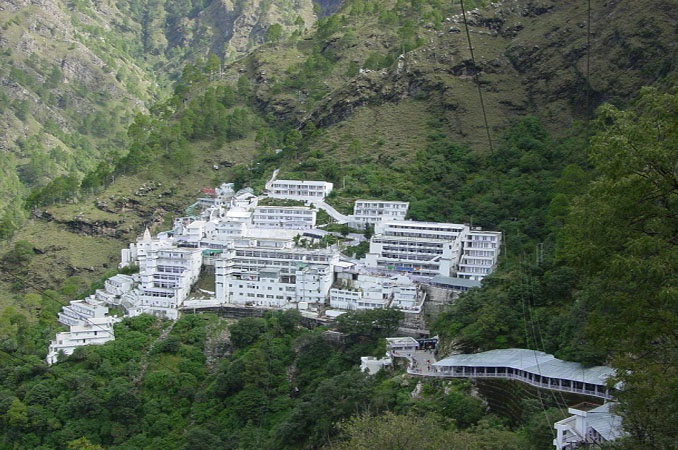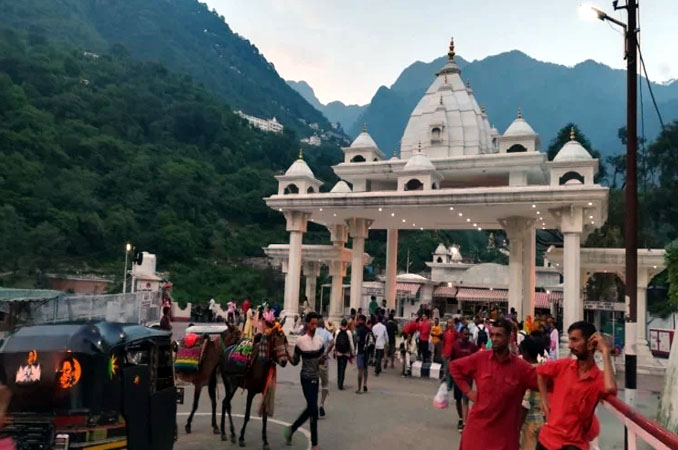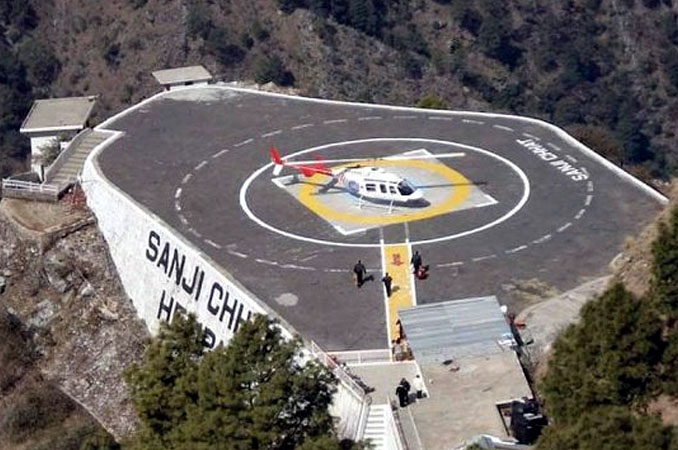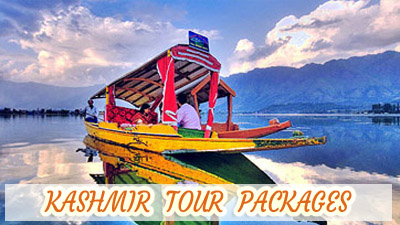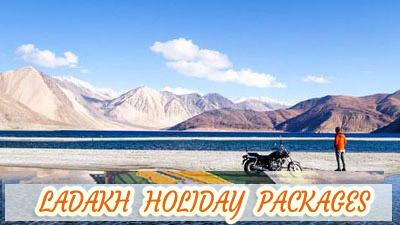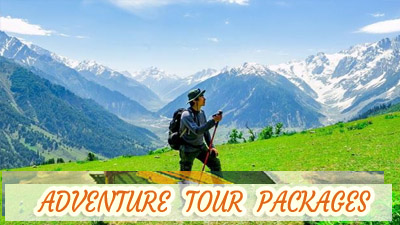|
History
As the legend goes, more than 700 years ago Vaishno Devi a devotee of Lord
Vishnu, used to pray to Lord Rama and had taken vow of celibacy. Bhairon
Nath, a tantric (demon-God) tried to behold Her. Making use of his tantric
powers, Bhairon Nath was able to see Her going towards the Trikuta mountains
and gave chase. The Goddess felt thirsty at Banganga and shot an arrow into
the earth from where water gushed out. Charan Paduka, marked by the imprints
of Her feet, is the place where she rested. The Goddess then meditated in
the cave at Adhkawari. It took Bhairon Nath nine months to locate Her, the
reason why the cave is known as Garbh Joon. Mata Vaishno Devi blasted an
opening at the other end of the cave with Her Trident when the demon-God
located Her.
Places around Vaishno Devi
Bhairon Nath : Unaware about the Goddess, Bhairon Nath started to chase the
girl. The Goddess ran to save herself, when she felt thirsty, she shot an
arrow in the ground and the water gushed out. Ever since, the gush is
flowing ceaselessly and is known as Ban Ganga. Till date, the imprints of
her feet are marked on the banks of Ban Ganga and known as 'Charan Paduka'.
After this incident, the Goddess went into a cave at Ardhkuari for
meditation.
Bhairon Nath took around nine months to find this cave. The meditation was
disturbed when Bhairon came at the cave and the Goddess made on opening at
the other end of the cave with her trident. From that time, this cave came
to be known as 'Garbha Joon'. The Goddess ran further on the hill and when
Bhairon tried to kill Vaishno Devi, she emerged in the form of Maha Kali.
She cut off Bhairon Nath's head, which flung up the mountain by the force of
the blow.
Today, Bhairon Temple is standing on the place where once his head was
knocked down. The area is known as Bhairon Ghati and it is at a distance of
2.5 kms from the holy cave. In the last moments, Bhairav Nath beseeched the
Goddess for forgiveness. Vaishno Devi knew that the objective behind the
attack was to attain salvation. The Goddess liberated Bhairon from the cycle
of life and death.
The Holy Cave of Shiv Khori is the abode of Lord Shiva, situated at a
distance of 70 km from Katra. The cave is a real wonder to be seen and
measures nearly a kilometer in length with a four-feet-high naturally formed
Shiv-lingam at the heart of the sanctum sanctorum. A few miles away from
Katra is Pindian at the foot of the Trikuta range. This spot is also
dedicated to Vaishno Devi.
The temple of Baba Dhansar is dedicated to Lord Shiva and is located at a
distance of about 15 km from Katra on way to Salal Dam. Here, a huge spring
emerges from the rocks in a thick grove of trees and forms a number of small
rapids before flowing into the holy rivulet that merges with the Chenab
River.
The sacred shrine of Dera Baba Banda is situated at a distance of 30 km from
Katra. It is a major Hindu-Sikh pilgrimage center. According to local
legend, Baba Banda Bairaagi was Guru Gobind Singh's favorite 'Saint Soldier'
who constructed a Gurdwara on the banks of river Chenab, where he spent his
last days.
The legendary hero Baba Jitto's temple is situated at village Aghar Jitto,
which is just 5 km from Katra town, on the Katra-Reasi Road. Baba Jitto, who
was a peasant by profession, was a staunch devotee of the Goddess Vaishno
Devi. He is remembered amongst the peasant class for his revolutionary act
of opposing the landlord's oppression and subsequently laying down his life
for this cause. A big fair called 'Jhiri Mela' is still conducted to
commemorate the martyrdom of Baba Jitto at a place called 'Jhiri', which is
20 km from Jammu.
HOW TO REACH
BY ROAD - Vaishno Devi Temple can be reached after making a steep 13-km trek
from the road head at Katra, the town at the foot of the Trikuta hills.
Several porters and ponies are available at Katra on hire.
BY AIR - Jammu is the nearest airport. Jammu's civil airport at Ranibagh is
9 km from the city center. Alliance Air, a subsidiary of Indian Airlines,
runs flights to and from Delhi, Srinagar and Leh.
BY RAIL - Jammu is the nearest railhead, which lies on the other side of the
Tawi River. Jammu is very well connected with all major destinations in
India by rail. Direct express trains link it with Mumbai, Delhi and
Calcutta. |



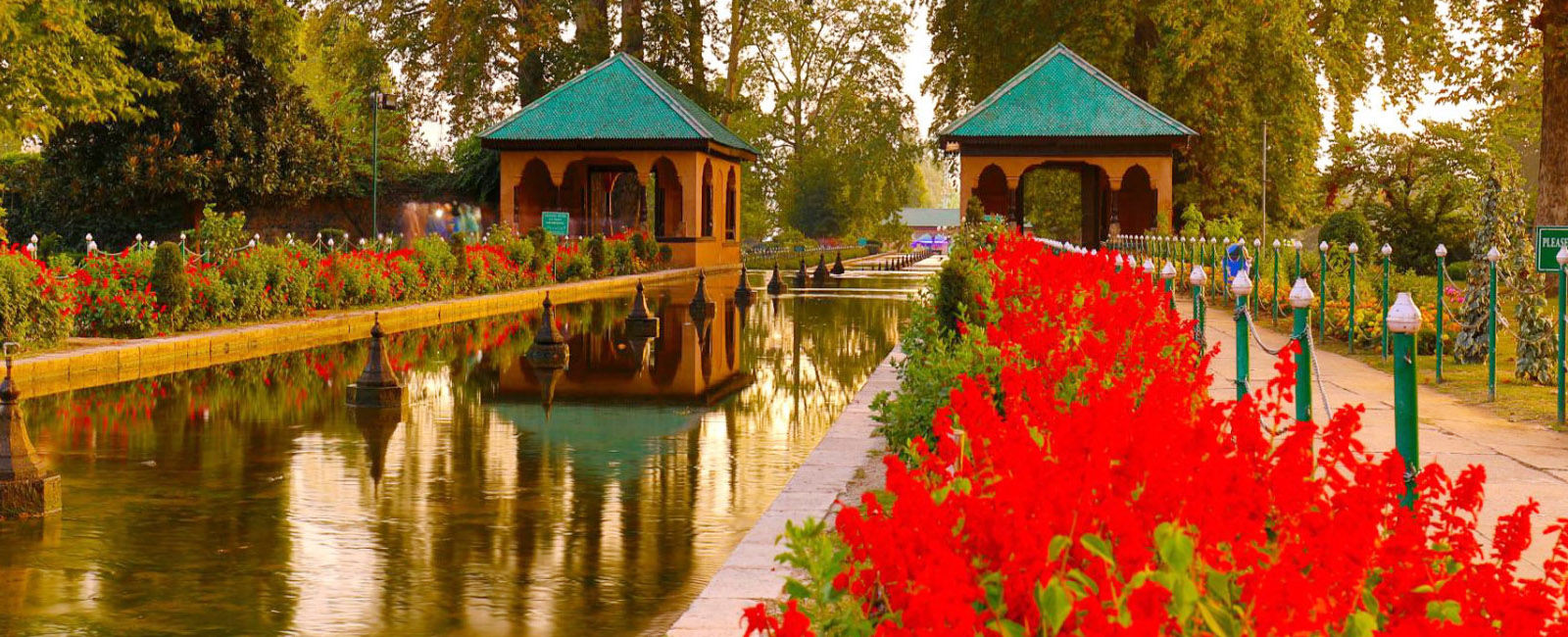




 1
1 2
2 3
3 4
4 5
5 6
6 7
7